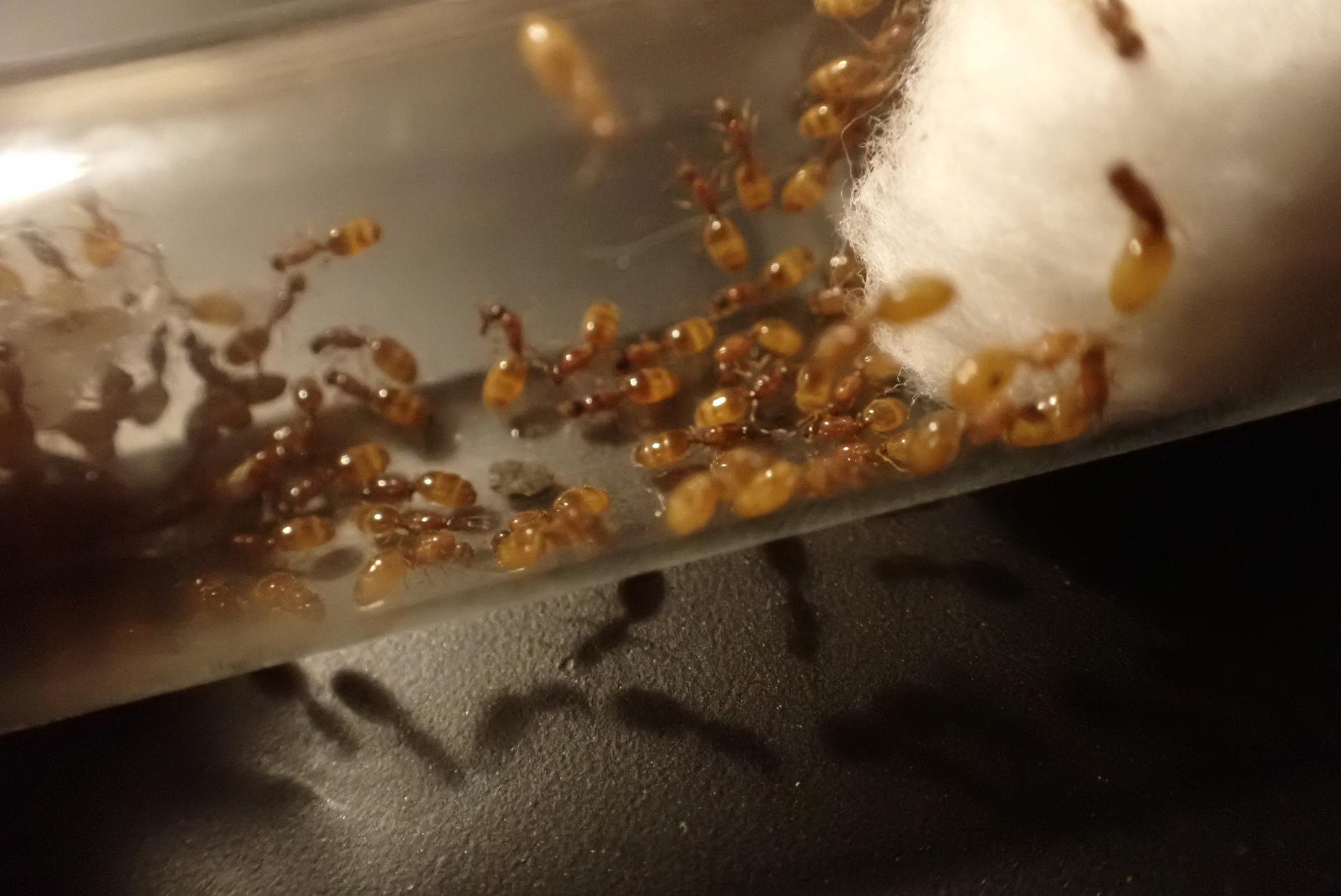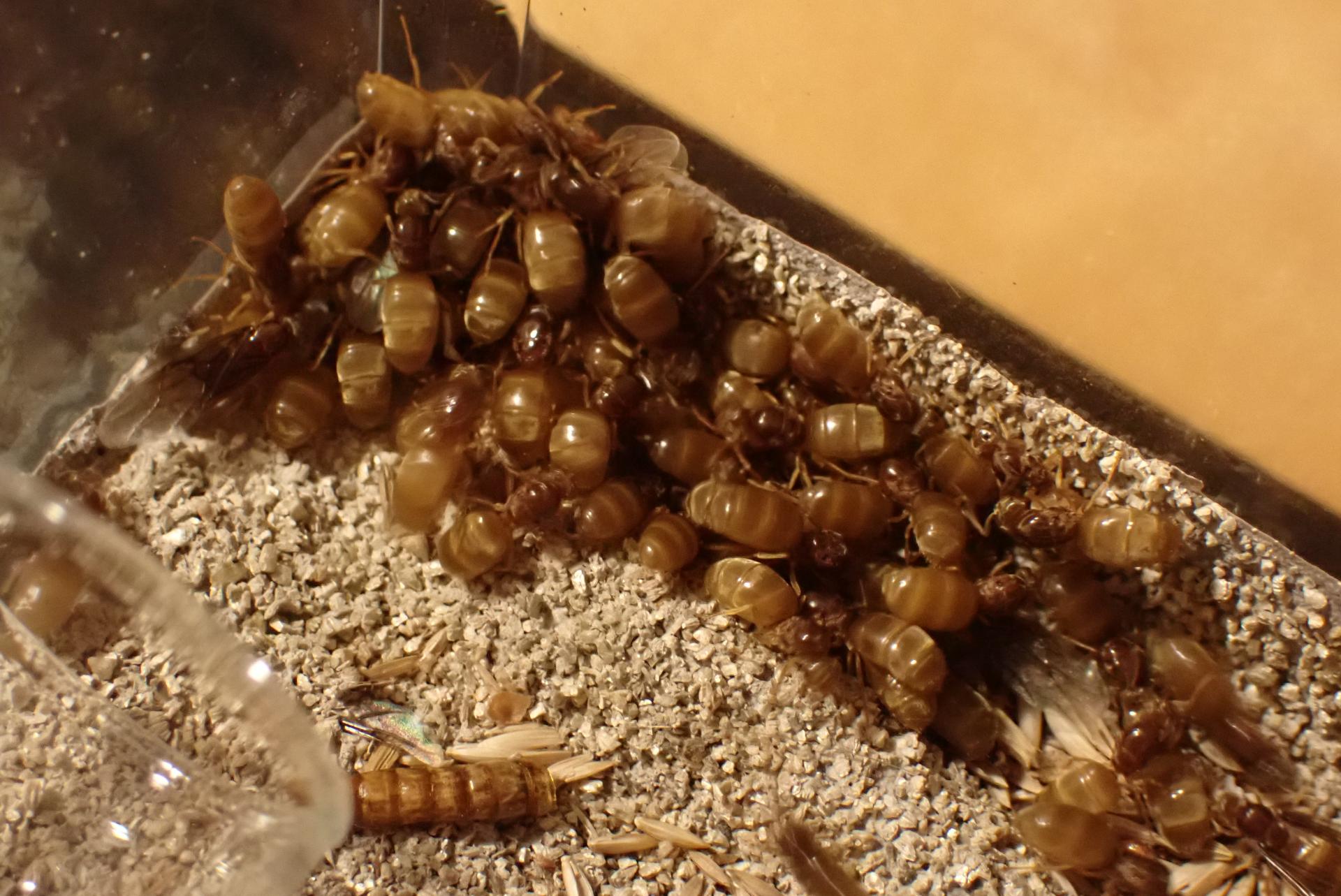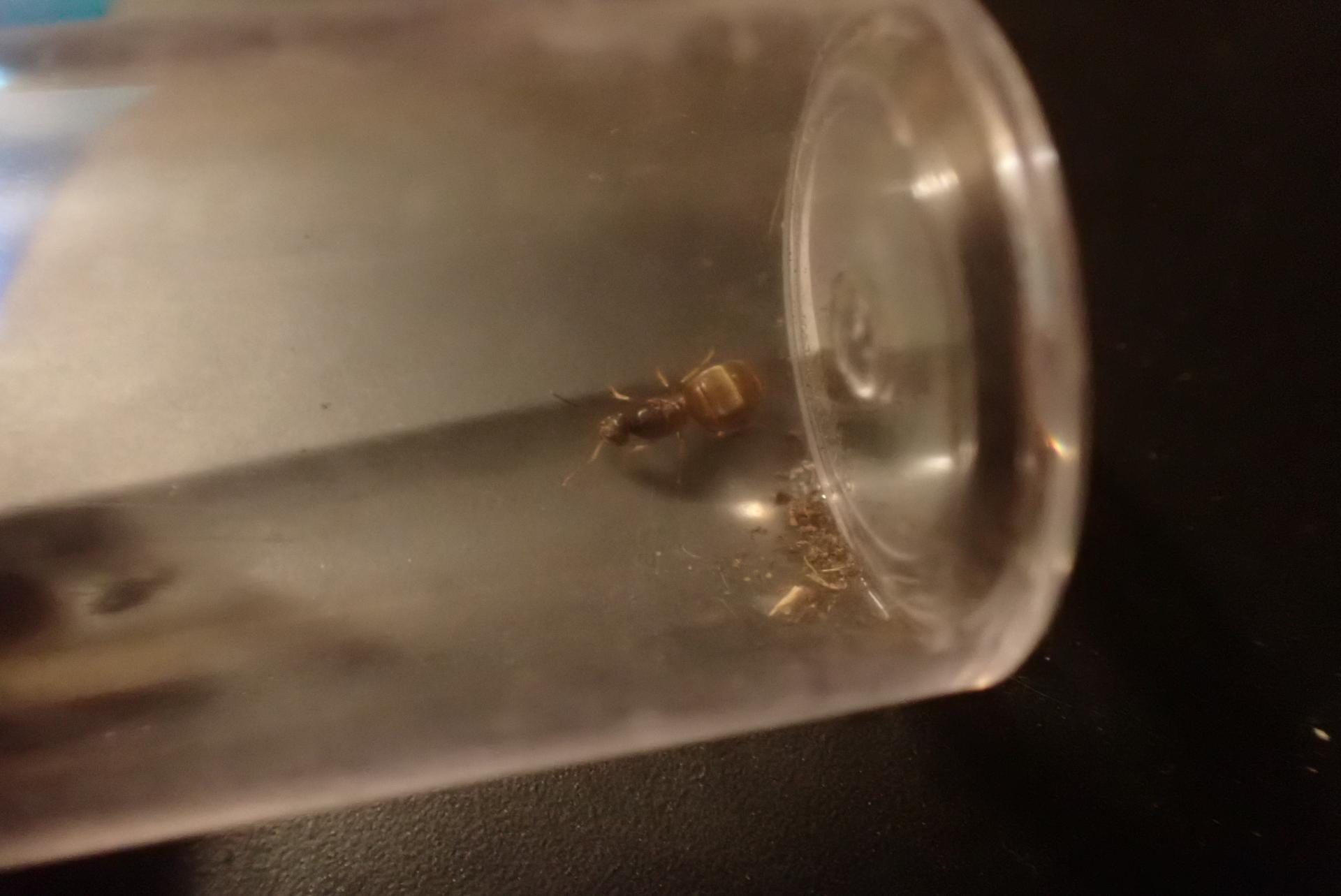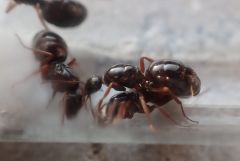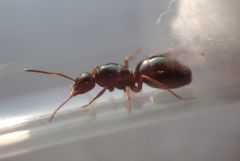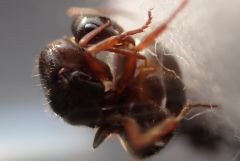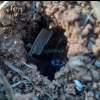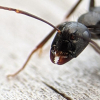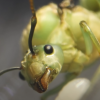Formica neogagates flew yesterday, September 7th, in Brookings where there is a significant population. Brookings is one of the most biodiverse cities in South Dakota due to South Dakota State University's advanced horticultural program and technique, growing large amounts of native plants throughout campus and the town. The University also refrains from using insecticides. This makes Brookings an anting hotspot for Ants_Dakota and I that is also less than an hour from Sioux Falls. The only east-river population of Pogonomyrmex occidentalis I have observed is in Brookings. Various species of Formica, Myrmica, Lasius, and other prairie-dwelling species can be found there in far greater numbers than anywhere else in this part of the state.
The flight occurred in the morning. This is an unusual time of year for Formica to fly, and on top of that the day didn't seem ideal at all. The high that day was 66 F (19 C), and the low was 37 F (2.5 C). It was still in the 50s when they flew. Despite the unfavorable conditions (I would have bet money on them not flying), this is the largest singular Formica flight I have ever seen. Ants_Dakota was able to catch 8 queens in the morning, although he was busy that day and I was unavailable. The next day (today) we had time, and we looked for stragglers in the late afternoon, around 5 PM. On a certain sidewalk we found dozens of queens heading in one direction, presumably to their mother colony (which, if this is just one flight, must have hundreds or thousands of queens; the trails made by the mother colony were composed of all-black and bicolored black-and-red workers, signifying color variation and genetic diversity). Note that these are straggler queens, and we found over 20 of them in less than an hour. We could have found many more if we actually were aware of the initial flight.
Anyways, several colonies are currently for sale. Message Ants_Dakota or myself with any questions.
Edited by RushmoreAnts, September 9 2025 - 7:37 AM.






